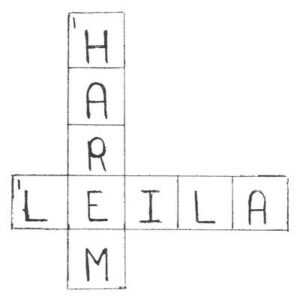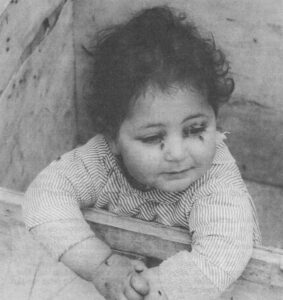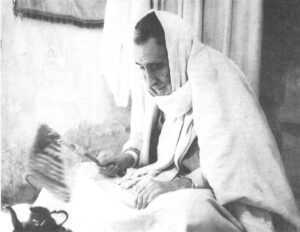Paula Stern
- 1970

Fellowship Title:
- The Contemporary Middle East
Fellowship Year:
- 1970
Shabbath is Not Just for the Beach
“The major problem in Israeli society has nothing to do with the Arabs and Jews or Oriental and Western Jews: it is the Orthodox Jews and the rest of us,” a Jerusalemite, a Jew, recently declared. Although only twelve percent of the population is Orthodox – Jews who strictly and literally follow the spiritual traditions of their forefathers, every Israeli falls under the jurisdiction of the Orthodox whose courts adjudicate all Israeli law pertaining to personal matters. “There are lots of Israelis who feel uneasy with fundamentalist religion but who still think Shabbath should not be only for going to the beach,” according to Dr. Ezra Spicehandler, Proctor of the Hebrew Union College – Jerusalem Branch, an affiliate of the American Reform Jewish movement, which came to Israel after traveling to America from Germany where it developed during the Nineteenth Century German Jewish Enlightenment. Reform Judaism attempts to relate historical Judaism to modern Israeli life and tries to appeal to the non-Orthodox majority of Israelis. American-style Reform Judaism – what Israelis call Progressive Judaism, however,

A Puzzling New Breed of Arab Woman
Here is a quick crossword puzzle to test your image of the Arab woman today: Number one across: the Arab woman best known to the West today whose name is often associated with trouble. Number one down: one of the best known Arabic words in the English language referring to that part of the house allotted to females and also referring to the wives, concubines, or other females occupying the woman’s sector of the house. The Answers: Leila Harem (Khaled) How do these two words fit together other than in this crossword puzzle? Figuratively speaking they spell a puzzling new breed of Arab women. Harem evokes the old image of the submissive and veiled Arab woman. Leila Khaled is not veiled and emphatically not submissive. She is the two-time (once successful) skyjacker for the Popular Front for the Liberation of Palestine (PFLP). This is the point: With Leila Khaled’s help PFLP commandos not only touched off the September fighting in Jordan but they have also lighted a slow-burning fuse under the harems and the traditions

Portrait of the Artist (Palestinian) as a Political Man
June, 1971 “Our revolution is a drop of blood, a drop of sweat, and a drop of ink” asserts a Fateh poster. So it should not be surprising that Palestinian artists dabble in politics. The best-known Palestinian artist, Ismail Shammout, for example, speaks of his art work in political terms, “I’m happy that a landscape of a refugee camp or a tragic theme is hung in the house of rich people because I do make people remember.” Ismail Shammout in his PLO office Palestinian studio art was not born from the Palestinian Liberation Movement. But the June War and the rise of the commando movement re-sensitized Palestinians who are expressing their national identity by painting as well as skyjacking. Poster art is most obvious. In Beirut, cultural capital of displaced Palestinians, the Fifth of June Society – it’s name and founding date demonstrate the impact on Palestinian self-consciousness of the Arab-Israeli War which started June 5, 1967 – raises funds by selling poster size reproductions of works of Arab artists that appeal to the more

Obituary for a People: The Jews of Tunisia III
June, 1971 Am Ajjai Fi Jerushalim…Lshanah Habah Byerushalaim…Next Year In Jerusalem* *From the Haggadah , the prayer book read during the Jewish holiday of Passover in Judeo-Arabic, Hebrew, and English. “Isolated communities…in Southern Tunisia and in particular in the island of Djerba, which was cut off by the sea from any adulterating influences, provide us with the best source of information regarding Jewish life in North Africa before the arrival of the Spanish refugees. Here, where neither Spanish nor French influence penetrated to any appreciable extent Jewish life as it had been lived for centuries was retained in an almost pure state of preservation into the middle of the twentieth century.” –From Andre Choraqui,Between East and West, The Jews of North Africa, 1969 For the Djerban Jew, the present is the past preserved. He cherishes the glorious history and vivid legends of his forebears. The distilled vision of the romantic past is more pleasant to think about than the flies and filth in his hara (ghetto) in Djerba, Tunisia, today. “We’re the oldest, living Jewish

Obituary for a People: The Jews of Tunisia II
I. Who’s Knocking On The Door? A Goy. May, 1971 For Hai, whose name in Hebrew means life, life in his Southern Tunisian hometown, Mednine, is hard. He believes that because he is a Jew, he has a hard time keeping steady employment as a carpenter. And since the eighteen year old has befriended the Peace Corps volunteers in the area, the police have questioned him, “What’s a Jew doing mixing with foreigners – Americans?” Hai compensates for the difficulties he is having with his Muslim townsmen by embellishing tales of the good old days when, Mednine had two thousand inhabitants – all of them Jews. On Saturday [the Jewish Sabbath] everyone would wear their Saturday-best; and in the afternoon, they would promenade to a cafe, have a drink, and not pay until the next day because it’s forbidden to handle money on the Sabbath.” There is a grain of truth in Hai’s description of Jewish life in Mednine. The seventy Jews who live there now are the remnant of a once thriving
